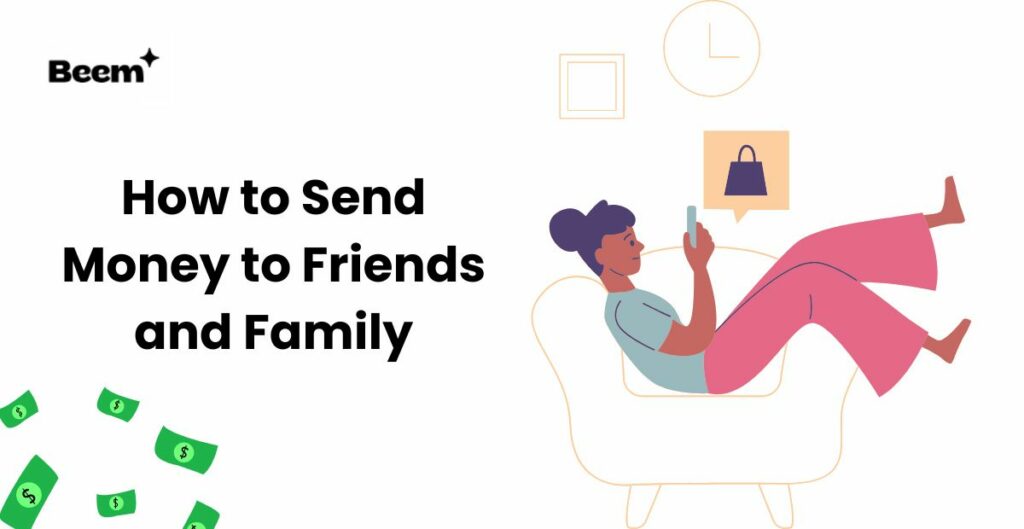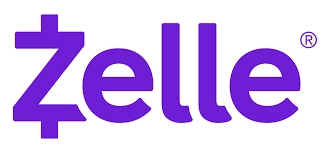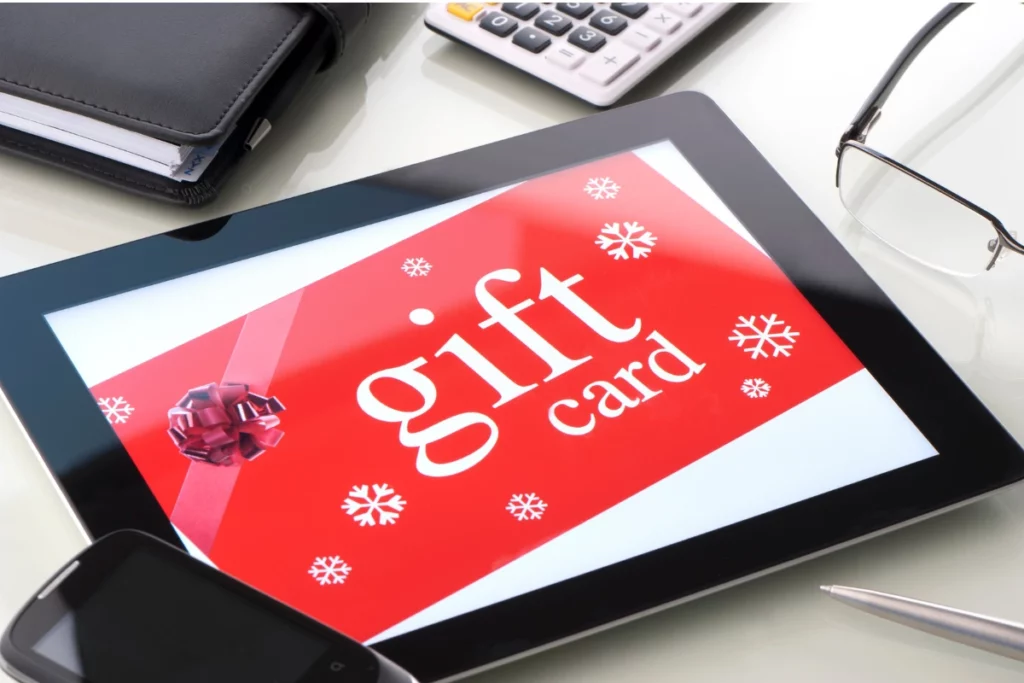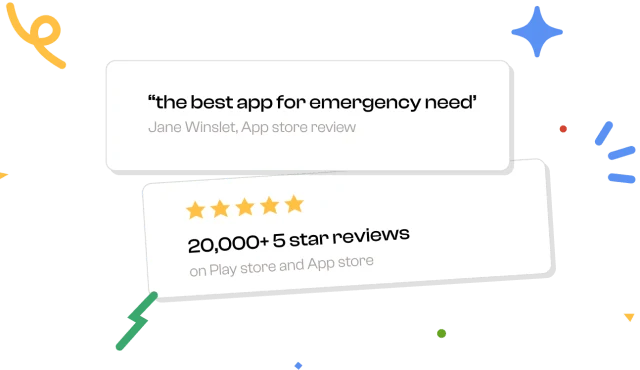Table of Contents
In our fast-paced lives, sending money to friends and family has become increasingly essential. Whether it’s splitting a dinner bill, helping a loved one in need, or sending a birthday gift, the ability to transfer money quickly and easily can strengthen connections and support those we care about.
However, for many, especially those juggling tight budgets or lacking experience with financial tools, the process can seem daunting.
This comprehensive guide will explore the various methods to send money to friends and family, addressing common pain points and targeting specific user personas, such as young professionals, gig economy workers, families living paycheck to paycheck, students, and credit-challenged individuals.
Let’s dive into the different ways to send money, the considerations to keep in mind, and the best solutions available today.
Understanding the Need to Send Money
Sending money is not just a financial transaction; it’s a way to express love, support, and solidarity. For many people, especially those facing financial challenges, being able to send or receive money from loved ones can significantly impact their lives. Here are some common scenarios in which individuals might need to send money:
- Sharing Expenses: Friends and family often split costs for meals, trips, or gifts, making it easier to manage group expenses.
- Financial Support: In times of need, such as medical emergencies or job loss, sending money can provide immediate relief to loved ones.
- Gifts and Celebrations: Sending money as a gift for birthdays, weddings, or holidays allows individuals to contribute to significant life events.
- Repaying Debts: Whether it’s repaying a loan or returning borrowed cash, transferring money can help maintain trust and transparency in relationships.
- Daily Transactions: Simple transactions like paying for coffee, groceries, or transportation can be made easy with quick money transfers.
Challenges Faced When Sending Money

While the ability to send money has become more accessible, many individuals still encounter challenges. Understanding these pain points can help tailor solutions to better meet the needs of various user personas.
1. High Fees and Hidden Charges
Many traditional banks and money transfer services charge high fees for sending money, especially for international transfers. For individuals living paycheck to paycheck or those with limited disposable income, these fees can add up quickly, making it difficult to send the intended amount.
2. Complicated Processes
Some money transfer methods involve complicated setups, requiring users to create accounts, link bank accounts, or navigate complex interfaces. For those unfamiliar with technology, this can be frustrating and time-consuming.
3. Security Concerns
Sending money online raises security concerns. Users may worry about identity theft, scams, or fraud, especially if they are not familiar with the service being used.
4. Delayed Transfers
Not all money transfer methods are instant. Delays in processing times can lead to frustration, especially in urgent situations where immediate support is needed.
5. Limited Access to Banking Services
For credit-challenged individuals or those living in underserved areas, access to traditional banking services can be limited. This makes it difficult for them to send or receive money through standard methods.
Methods to Send Money to Friends and Family

Now that we’ve identified the need and challenges, let’s explore the various methods available to send money to friends and family. We will cover both traditional and modern solutions, highlighting the pros and cons of each option.
1. Cash
How It Works: The simplest method to send money is to use cash. Handing over physical currency is straightforward and doesn’t involve any fees.
Pros:
- Immediate and straightforward transaction
- No fees or hidden charges
- No need for technology or bank accounts
Cons:
- Risk of loss or theft
- No transaction record
- Not practical for long-distance transfers
Best For: Cash is suitable for small transactions among friends and family who are physically present.
2. Checks
How It Works: Writing a check is another traditional method for sending money. You simply fill out the recipient’s name, amount, and date, then hand it over or mail it.
Pros:
- Provides a paper trail for both parties
- Safe for larger amounts (since it can’t be cashed without a signature)
Cons:
- Can take several days to process if mailed
- Requires a bank account to deposit
- Potential for bounced checks if insufficient funds are available
Best For: Checks work well for larger transactions or formal payments (like rent or gifts) but are less convenient for everyday use.
3. Money Orders
How It Works: Money orders are prepaid documents that can be used to send money. You can purchase them from banks, post offices, or convenience stores.
Pros:
- More secure than cash, as they can be replaced if lost
- No need for a bank account to obtain a money order
Cons:
- Fees can apply, especially at retail locations
- Requires the recipient to go to a bank or post office to cash or deposit
Best For: Money orders are a good option for those who don’t have access to bank accounts but need a secure way to send funds.
4. Bank Transfers
How It Works: Bank transfers involve moving money from one bank account to another, either domestically or internationally.
Pros:
- Secure and reliable method for larger sums
- Offers a paper trail for transactions
Cons:
- Often comes with high fees, especially for international transfers
- May take several days to process, depending on the banks involved
Best For: Bank transfers are ideal for larger, formal transactions, especially between trusted parties.
5. Mobile Payment Apps
Mobile payment apps have revolutionized the way we send money. Here are some popular options:
- Venmo: Allows users to send and receive money easily among friends. It’s free to transfer from a bank account or debit card, but there’s a 3% fee for credit card transactions.
- Cash App: This app allows users to send money instantly to anyone, with a simple interface. Cash App also offers a free debit card and the ability to invest in stocks and Bitcoin.
- Zelle: Integrated with many banks, Zelle allows users to send money directly from their bank account to another person’s account, often instantly. It typically has no fees, but users must be enrolled in a participating bank.
- PayPal: One of the oldest money transfer services, PayPal allows users to send and receive money globally. While domestic transfers can be free with a bank account, international transfers and credit card payments incur fees.
Pros:
- Fast and convenient for instant transfers
- Often no fees for bank transfers or within the app
- Easy to use and accessible via smartphones
Cons:
- Some services charge fees for credit card transactions
- Security concerns, especially if sharing account information
- Not all recipients may have the app or account set up
Best For: Mobile payment apps are perfect for casual transactions among friends and family, especially for those who frequently use technology.
6. Online Payment Services
In addition to mobile apps, various online services allow for sending money.
- Beem: As the #1 Smart Wallet App, Beem allows you to send money to anyone in the USA for free. With features like instant cash advances and budgeting tools, Beem offers a comprehensive financial solution.
- Western Union: This service has been around for years and allows for money transfers worldwide, both online and through physical locations.
- MoneyGram: Similar to Western Union, MoneyGram enables users to send money both locally and internationally.
Pros:
- Provides global reach, making it easy to send money across borders
- Often has multiple payment options available
Cons:
- High fees for international transfers
- Processing times can vary depending on the service
Best For: Online payment services are beneficial for those who need to send money across state or international lines.
How to Choose the Best Method for Sending Money
When deciding how to send money, consider the following factors:
- Speed of Transfer: If you need to send money immediately, look for instant transfer options like mobile payment apps or cash.
- Fees: Assess the total costs associated with the method you choose. Some services might advertise free transfers but may charge hidden fees.
- Convenience: Choose a method that both you and the recipient find easy to use. If the recipient isn’t tech-savvy, cash or checks may be better options.
- Security: Ensure that the method you choose offers sufficient security measures to protect your money and personal information.
- Recipient’s Preferences: Consider the recipient’s preferences and capabilities. For example, if they don’t have a bank account, cash or a money order might be necessary.
Step-by-Step Guide to Sending Money Using Beem
With all the options available, let’s focus on how to use Beem to send money to friends and family. Beem is designed to be user-friendly and secure, making it an ideal choice for individuals seeking convenience and support.
Step 1: Download the Beem App
- Download the Beem app from the App Store or Google Play.
- Sign up for an account using your email or phone number.
Step 2: Set Up Your Profile
- Complete your profile by providing necessary information, such as your name and banking details (for instant cash advance features).
- Be sure to enable security settings to protect your account.
Step 3: Link Your Bank Account
- Link your bank account or debit card to your Beem account for easy transfers.
- This step allows you to send and receive money without worrying about fees.
Step 4: Sending Money
- To send money, open the Beem app and select the “Send Money” option.
- Enter the recipient’s phone number or email address linked to their Beem account.
- Input the amount you wish to send and add a note if desired.Review the transaction details and confirm the transfer.
Step 5: Notify the Recipient
- After sending the money, notify the recipient through text or in-app messaging to confirm they received it.
- If they haven’t set up their Beem account yet, guide them through the process to ensure they can access the funds.
Step 6: Utilize Additional Features
- Encourage recipients to explore Beem’s other features, such as budgeting tools and credit monitoring.
- Suggest using the app to send money in the future to take advantage of its convenience.
Tips for Sending Money Safely
To ensure that your money transfer experience is smooth and secure, keep these tips in mind:
- Verify Recipient Information: Always double-check the recipient’s phone number or email address before sending money to avoid sending funds to the wrong person.
- Use Trusted Services: Stick to well-known and reputable money transfer services like Beem to ensure security and reliability.
- Avoid Public Wi-Fi: When sending money, use a secure, private internet connection rather than public Wi-Fi to reduce the risk of hacking or data theft.
- Set Up Notifications: Enable notifications within the app to receive updates on your transactions and ensure everything is processed correctly.
- Keep Records: Maintain a record of your transactions, whether through email confirmations or app notifications, for your reference.
We all have friends and family to whom, at some point or the other, we’ve had to send money. We know that money is of the essence when it comes to events like sickness, unemployment, fee submission and more.
Since you do not always hand in the money to the person physically, there should be viable options to equip you with the same.
So which method should you use to send money quickly to friends and family? Let’s take a look at all the factors that you should ponder before choosing a suitable method.
The recipient’s requirements
You need to consider the following when you’re going to send money to friends or family:
What is the reason for sending money?
You need to ask if this is a single-purpose transaction or a recurring thing like money for buying groceries or essentials.
Does the person in need own an account?
Inquire if the recipient has a checking or savings account, as transfer obligates both parties to have them at times.
Are they tech-savvy?
Not everyone is used to the knicks and knacks of technology. However, options like P2P transfers are convenient, and if your loved one is fluent in using technology, this can be a suitable method.
You can Also see: money across banks
Best Ways To Send Money Quickly
1. Zelle

Zelle is a P2P service that has a vast network of over 750 banks and credit unions. It is incorporated on the websites of many credit unions and financial institutions too. To send money through Zelle, the sender, and receiver should have a dedicated account, registered at Zelle with a phone number and email.
- This option is best for payments that need to be done on a recurring basis and for people who are comfortable in using online banking services.
- The transfer speed of Zelle is unparalleled as it does so within a few minutes and takes up to 3 business days for first-time users.
- A complete transaction cannot be reversed on Zelle, so make sure you enter the correct amount and choose the right recipient while sending the money.
2. Digital gift card

Digital gift cards are offered by many merchants and accepted by the same too. You can find them at giftcards.com or giftcardmail.com. You can send a gift card on the same day or schedule it for later use, too. Gift cards are operable at various businesses, hotels and food delivery companies like Grubhub or Doordash.
- These are great options if you are looking for a one-time transaction, online or offline.
- The speed of delivery is 24 hours on websites like giftcards.com or giftcardmail.com
- Gift cards are easy to use and secured, as the recipient will receive one through email which does not require any bank account detail.
3. Third-party Peer-2-Peer applications
Some prominent P2P services are PayPal, Venmo, Square Cash, and Apple. It is great if both the sender and recipient have the same application on their device. However, free delivery on such apps comes with a time delay. If you want a quick transfer, a fee will be imposed, which usually is 1% of the total amount and a maximum of $10. Some of these services often provide debit card to access funds.
- This option is the most suitable for people who are not in a hurry and have the same applications on the devices. If they want quick delivery, they can choose the fee option too.
- Depending on your choice, it can take many days or can be in minutes.
- The payments cannot be reversed once they are completed. These applications also use the 2FA process to secure that data. While Apple Pay Cash also allows fingerprints and face recognition.
4. Prepaid debit cards
Just like we use debit cards for purchasing and paying bills, prepaid cards allow you to make transfers by adding amounts of money beforehand into the card. It is advisable to use two debit cards, one for transferring money, and the other one for your use. You can also have an American Express’s Bluebird that provides the option of creating sub-accounts with the master account, with a separate card for each. You will have the option to link these accounts to the bank account and transfer money freely across different accounts. These cards might have a monthly fee, it is best to do thorough research before choosing an ideal one.
- It is ideal for people who want trivial formalities while transferring money and do not have a bank account.
- Transactions are complete in a very short period among cards of the same type.
- These require your information like name, address, Social Security Number, etc. The security factor may vary from company to company.
5. Wire transfer
This real-time transfer option is provided by traditional banks and usually imposes a lot of transfer fees on every money transfer. If the transfer is time-sensitive and you are sending large sums, then this option will be relevant for you.
However, if you are not in a rush there is also a fee-free or low-fee option. This includes sending money to a linked account through an ACH transfer.
- This is best for hefty sums that you only need once.
- The transaction is complete within a few minutes.
- It is under scrutiny by the Federal Reserve System that applies to both government and banks. Remember, you cannot reverse this transaction.
6. Money order
Money orders are always mailed to the recipient at a relevant address. These can be through the post office, Western Union, or Walmart. They charge a minimal fee. A money order can be cashed easily through the mobile app or the location through which it was sent.
- This option is suitable for receivers who do not have access to the internet or bank accounts and recipients who want to receive money online.
- The transfer completes within 1-3 days via priority mail.
- A receipt is crucial as it will help you when your money order is stolen by replacing it.
Conclusion
Sending money to friends and family is a vital aspect of modern life, allowing us to support and connect with loved ones. With various methods available, from cash to advanced mobile payment apps like Beem, it’s essential to choose the option that best fits your needs and circumstances.
By understanding the pain points and preferences of different user personas, you can navigate the world of money transfers with confidence. Whether you’re a young professional, gig worker, student, or someone managing finances on a tight budget, solutions are available to make sending money easy, safe, and stress-free.
With Beem’s innovative features and commitment to user-friendly financial management, sending money to your loved ones has never been easier. Empower yourself and your friends and family by utilizing the tools available to support one another in times of need.
Frequently Asked Question About Sending Money To Friends and Family
What is the fastest way to send money to friends and family?
The fastest way to send money is through mobile payment apps like Beem, Venmo, or Cash App, which offer instant transfers between users.
Are there any fees associated with sending money using Beem?
Beem allows you to send money instantly without any fees. Always check the app for any potential costs related to specific features.
Can I send money internationally with Beem?
Currently, Beem focuses on domestic transfers within the USA. For international transfers, consider services like PayPal or Western Union.
Is it safe to send money through mobile payment apps?
Yes, reputable mobile payment apps use encryption and security measures to protect your information. Always enable security features like two-factor authentication for added safety.
What should I do if I sent money to the wrong person?
If you realize you’ve sent money to the wrong person, contact the app’s support team immediately to see if the transaction can be reversed. Prompt action can increase your chances of recovering the funds.
How do I receive money from friends and family using Beem?
To receive money, simply provide your phone number or email associated with your Beem account. You’ll receive a notification once the funds are sent.
Do I need a bank account to use Beem?
No, you don’t need a bank account to send or receive money using Beem. You can use the app’s features without linking a bank account.
Can I use Beem if I have a low credit score?
Yes! Beem allows users with low credit scores to access its services without requiring a credit check.
What happens if I lose my phone with the Beem app installed?
If you lose your phone, immediately report it to Beem’s customer support to secure your account. Change your password and enable security measures to protect your funds.
Can I send money anonymously with Beem?
While you can send money without revealing personal information, Beem requires registration for both the sender and recipient to facilitate transactions, ensuring some level of identification.





























